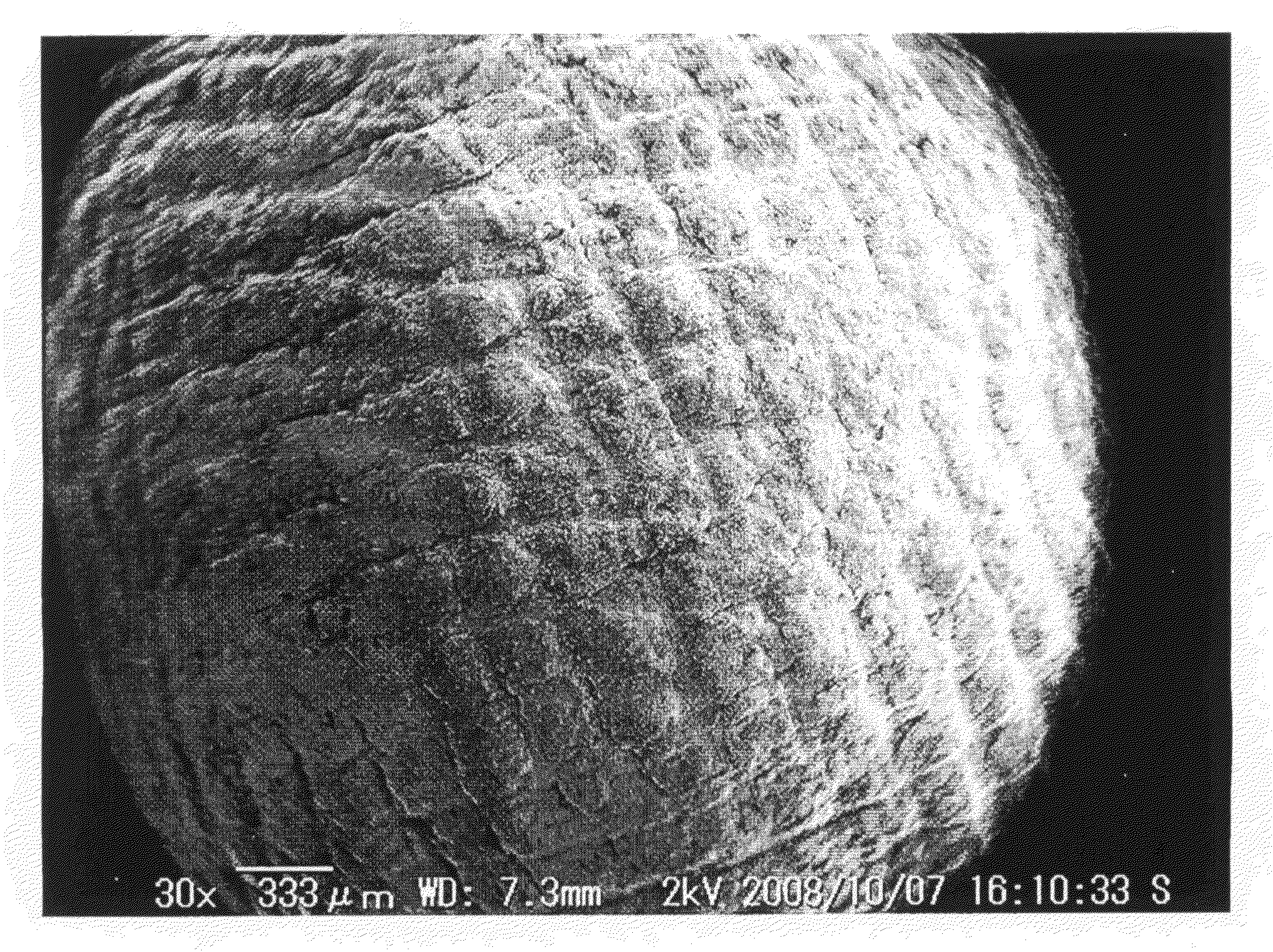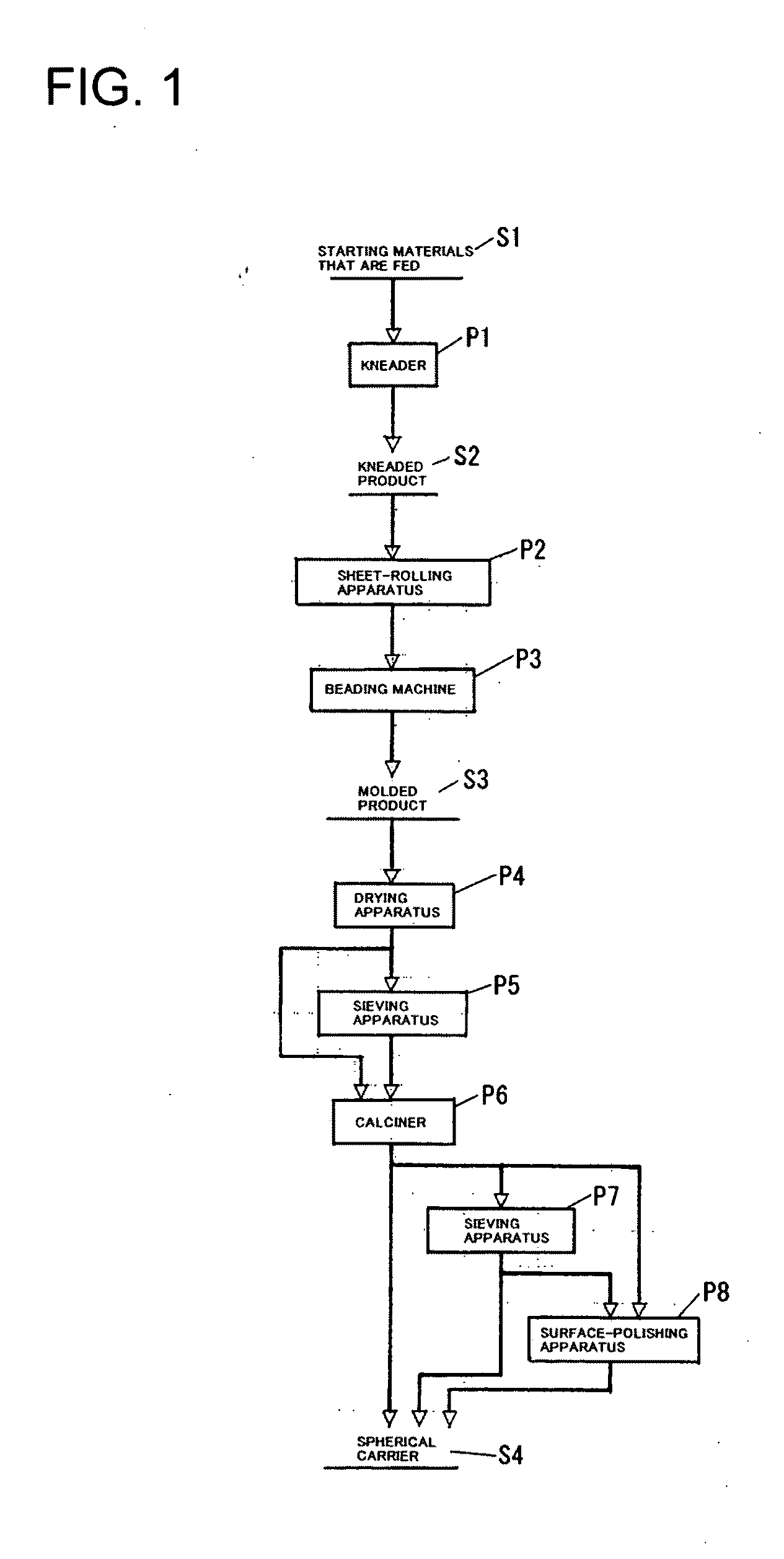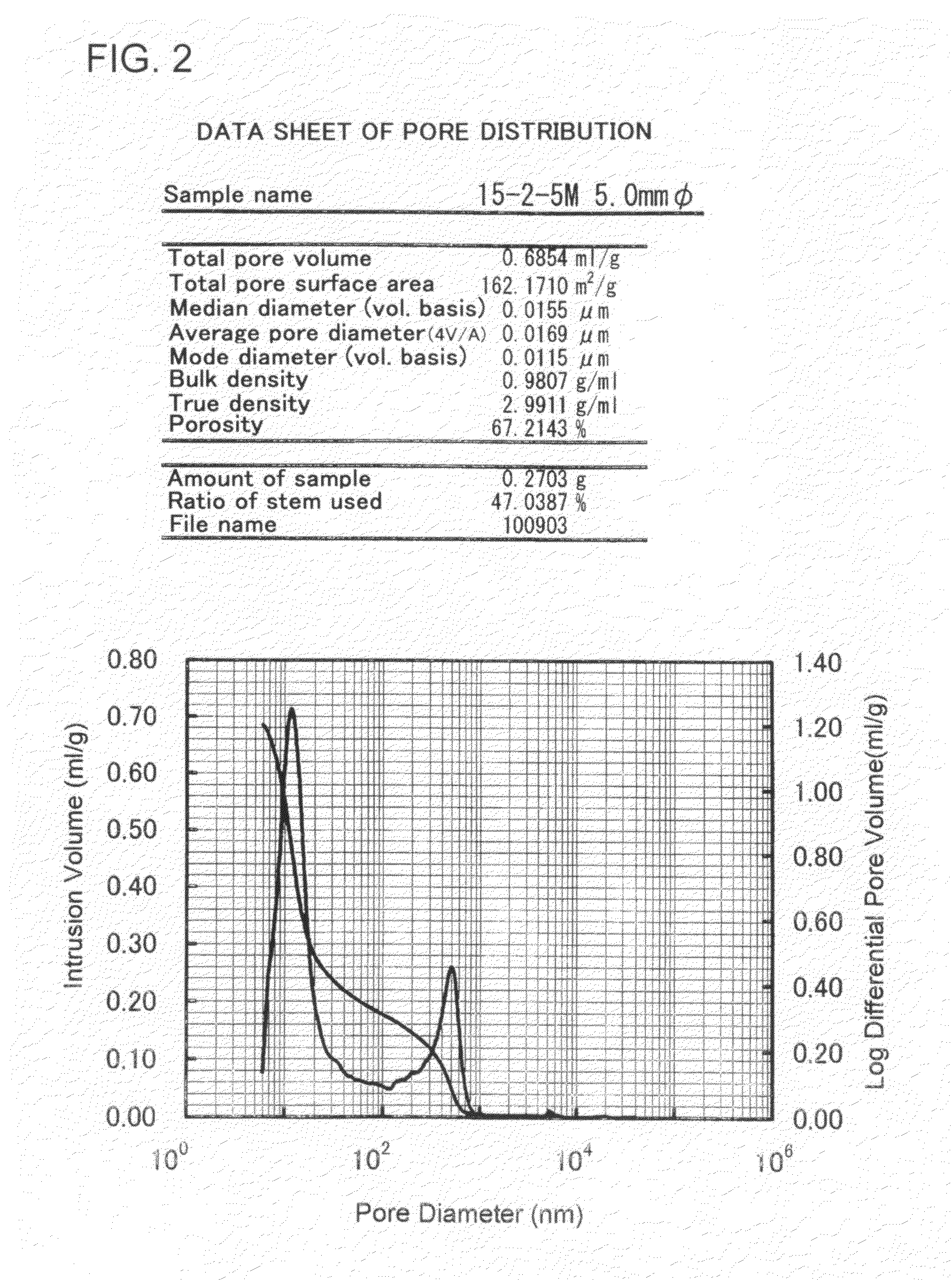Carrier and method of producing the same
a carrier and carrier technology, applied in the field of carriers, can solve the problems of carrier mechanical strength decline, carrier crushing or loss during reaction, and it is difficult to produce carriers having bi-modal pore distributions or tri-modal pore distributions for facilitating
- Summary
- Abstract
- Description
- Claims
- Application Information
AI Technical Summary
Problems solved by technology
Method used
Image
Examples
example 1
[0100]The starting materials that were fed were starting carrier components, solid binding agent, liquid binding agent and diluted nitric acid water. The starting carrier components contained 10% by mass of aluminum hydroxide (Al(OH)3, particle size: 10 μm), 60% by mass of pseudobeohmite (Al2O3, particle size: 20 μm) and 30% by mass of γ-alumina (Al2O3, particle size: 40 μm). Here, “% by mass” of the starting carrier components represents a value relative to the total mass of the whole components. As the solid binding agent, there were used 2% by mass of powder of α-starch (rice) (particle size: 150 μm) and 5% by mass of powdery cellulose (particle size: 150 μm). As the liquid binding agent, there was used 5% by mass of colloidal alumina (of the type of acetic acid stabilizer). Here, “% by mass” of the solid binding agent and liquid binding agent represent values relative to the mass of the starting carrier components. There was, further, used 35% by mass of diluted nitric acid wate...
example 2
[0104]A carrier was prepared by the same method as in Example 1 but so changing the amount of the kneaded product scratched by the scratching blade as to attain a central particle size of 5.0 mm after calcining, and changing the amplitude of the crumpling board and the perforation size of the sieve depending on the particle size.
[0105]Table 1 shows the evaluated results of the carriers. FIG. 2 includes a data sheet of pore distributions of the carriers and a diagram showing integrated pore volume distributions and Log differential pore volume distribution of the carriers. The central particle size was 5.0 mm. The pore volume was large, and a bi-modal pore distribution containing micropores and macropores was confirmed. The specific surface area was large, too. The side crushing strength was large, too. A rhombic mesh pattern was observed on the surface of the carrier. The yield is large, too.
[0106]FIG. 3 is a scanning electron microphotograph of the surface of the carrier. Concernin...
example 3
[0121]The carrier was prepared in the same manner as in Example 1 but so setting the amount of the kneaded product scratched by the scratching blade that the central particle size was 15.0 mm after calcining, and varying the amplitude of the crumpling board and the perforation size of the sieve depending on the particle size.
[0122]Table 1 shows the evaluated results of the carrier. The central particle size was 15.0 mm. The pore volume was large, and a bi-modal pore distribution containing micropores and macropores was confirmed. The specific surface area was large, too. The side crushing strength was large. A rhombic mesh pattern was observed on the surface of the carrier. The yield was large, too.
PUM
| Property | Measurement | Unit |
|---|---|---|
| particle size | aaaaa | aaaaa |
| width | aaaaa | aaaaa |
| width | aaaaa | aaaaa |
Abstract
Description
Claims
Application Information
 Login to View More
Login to View More - R&D
- Intellectual Property
- Life Sciences
- Materials
- Tech Scout
- Unparalleled Data Quality
- Higher Quality Content
- 60% Fewer Hallucinations
Browse by: Latest US Patents, China's latest patents, Technical Efficacy Thesaurus, Application Domain, Technology Topic, Popular Technical Reports.
© 2025 PatSnap. All rights reserved.Legal|Privacy policy|Modern Slavery Act Transparency Statement|Sitemap|About US| Contact US: help@patsnap.com



